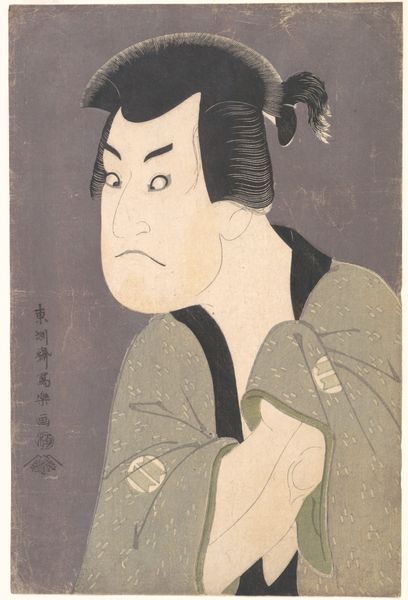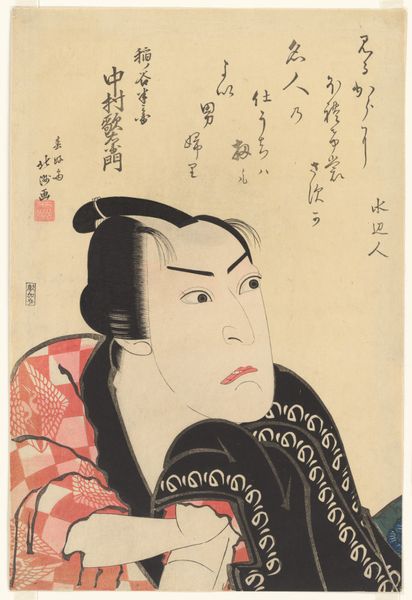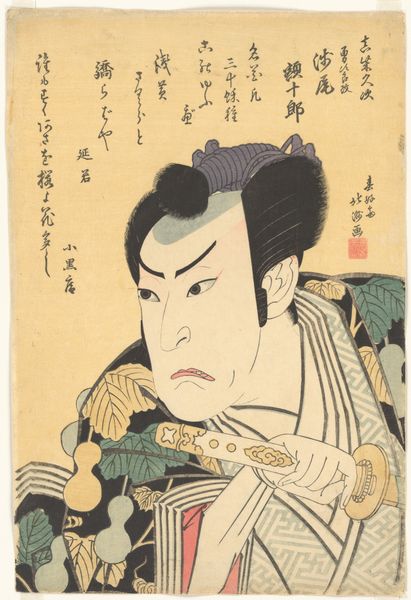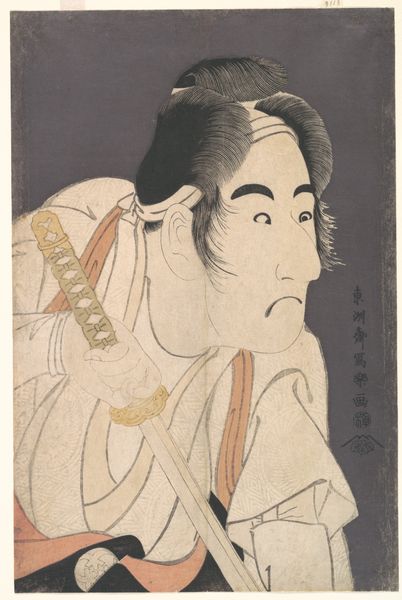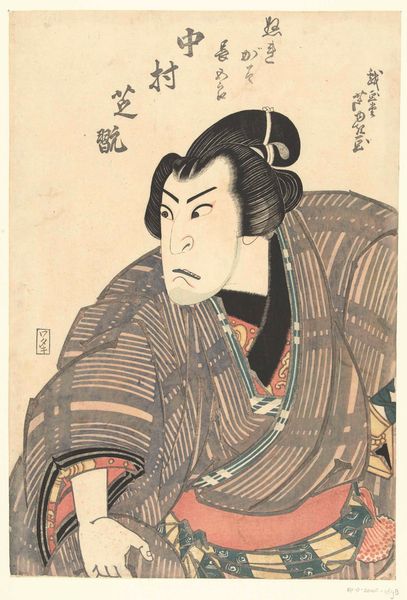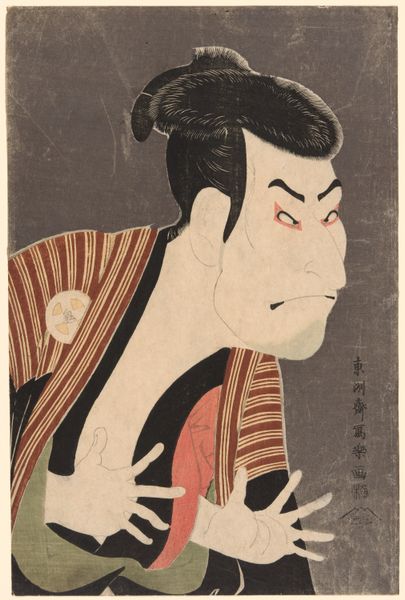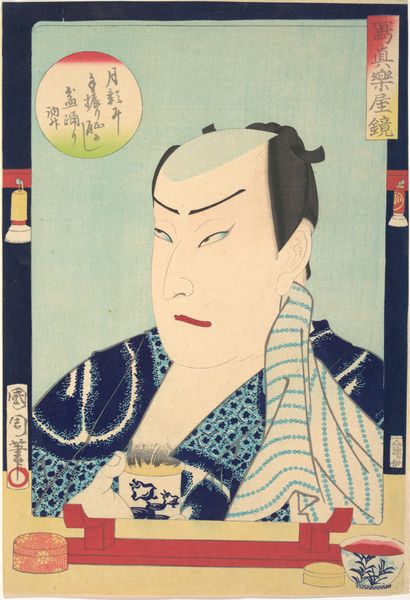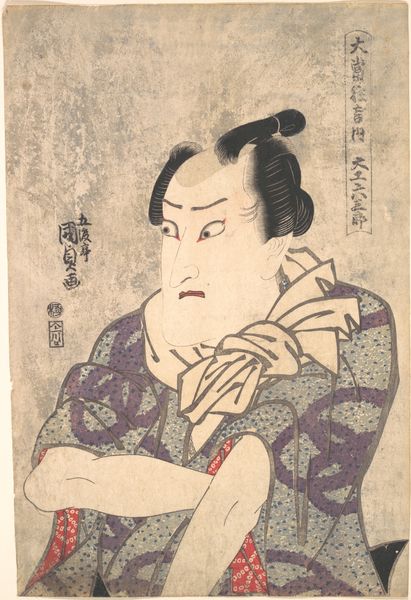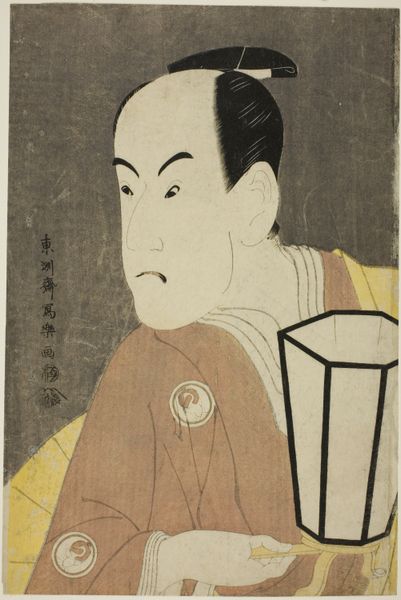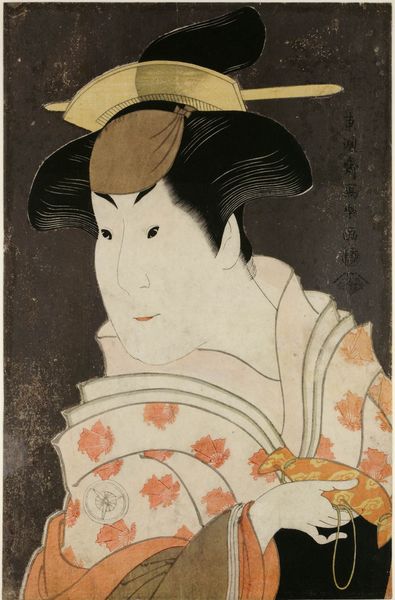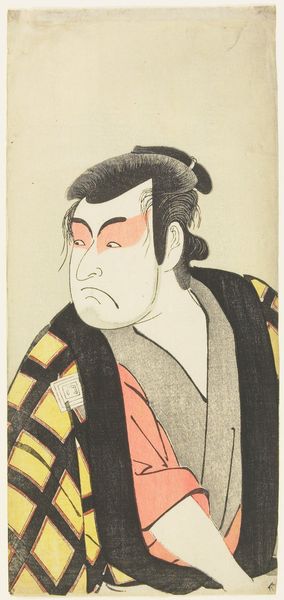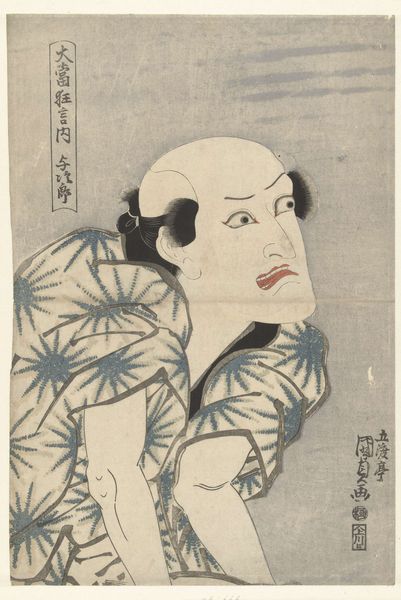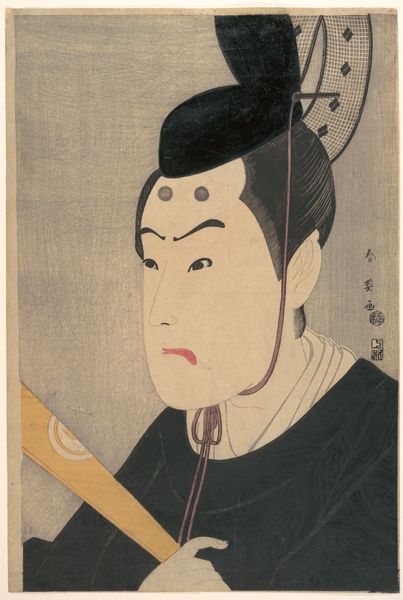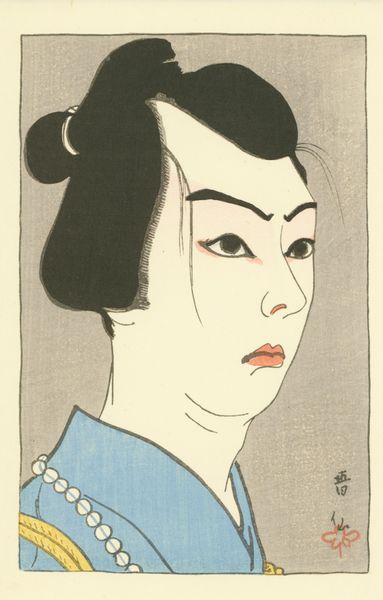
The actor Sakata Hangoro III as Fujikawa Mizuemon 1794
0:00
0:00
print, woodcut
#
portrait
# print
#
caricature
#
asian-art
#
caricature
#
ukiyo-e
#
figuration
#
historical fashion
#
woodcut
#
watercolour illustration
Dimensions: 37.3 × 23.9 cm
Copyright: Public Domain
Editor: Here we have Tōshūsai Sharaku's woodblock print from 1794, "The actor Sakata Hangoro III as Fujikawa Mizuemon," currently residing at the Art Institute of Chicago. It’s quite striking! The actor’s exaggerated features immediately grab your attention. How do you interpret this work? Curator: Sharaku's portraits are powerful critiques, challenging the glorification of celebrity in Edo-period Japan. While ostensibly portraying a famous actor, notice how his features are rendered almost grotesque. Do you see this as mere caricature, or could it be something more? Editor: I guess I assumed it was just stylized for the Ukiyo-e genre, but "grotesque" makes me rethink that. Was Sharaku making a statement about the actor or perhaps the Kabuki theater itself? Curator: Precisely! Consider the social hierarchy of the time. Actors, despite their fame, were often considered to be on the margins of society. Sharaku’s unflattering depiction could be read as a subversive commentary on class, questioning the perceived status of these performers. Does this reading change your understanding of the print? Editor: It definitely does. I had been looking at it as just a portrait, but now I see there’s potentially a critical message embedded within it about society's views on fame and status. So, beyond just capturing a likeness, Sharaku used this image to challenge those very notions? Curator: Absolutely. The artist is intervening to open space for discussion about social norms. Understanding Sharaku's work requires grappling with the power dynamics and social commentary inherent in Ukiyo-e prints, revealing the potential for art to be a vehicle for social critique, even in seemingly traditional forms. Editor: I hadn't thought about it that way before! I'm walking away with a totally different perspective and deeper appreciation for Sharaku's intention. Curator: Excellent!
Comments
No comments
Be the first to comment and join the conversation on the ultimate creative platform.
